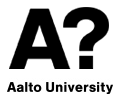In the previous posts (post 1, post 2, post 3, post 4, post 5) related to research ethics, plagiarism was mentioned many times as a form of research misconduct. Plagiarism is among the “big three” in the international categorisation of research misconduct: Fabrication, Falsification, Plagiarism (FFP). Post 2 shared (at title level) several TENK cases resolved in 2018, where plagiarism was found in Master’s/Pro Gradu theses and in a scientific article; post 4 similarly shared TENK cases where plagiarism and self-plagiarism was found in doctoral theses. In this post, I want to discuss plagiarism – with students, with national and international colleagues in the scientific world, and – basically – with anyone interested.
Plagiarism, in my view, is like stealing – in scientific texts typically of words/thoughts, and sometimes images or other creative concepts. It is done without citing/properly attributing the original source. These days, plagiarizing is easy for the one who wishes to do it: electronically copy-paste from a source, and use it in your own work without acknowledging the source – done in seconds or minutes. Writing original text (and creating images, etc) is much more laborious and time-consuming. Original work involves one’s own thinking process. Related to making summaries on literature, this often involves collecting together many sources, reading and interpreting them, and making your own decisions for what to write and how to write; and then finding the words and the order for them. (I just described the “CCC” method by my Aalto colleague Reetta Karinen, by the way: Collect, Compare, Conclude.) This original process easily takes thousands times longer than plagiarizing.
There are tools available such as Turnitin used at Aalto University, which can be used to “prevent plagiarism”, as the website says (as of 8.10.2019). A more simple description would be that the tools detect plagiarism, through visualizing common contents in multiple documents. These tools are useful, and in my view it should be mandatory that a doctoral/master’s/bachelor’s thesis goes through a plagiarism detection software before acceptance. However: this electronic check is – by far – not “waterproof”. It is easy to “fool” the not-so-intelligent system not to detect copy-pasting from a source e.g. by paraphrasing it. Try it yourself, and you’ll see – the tool is available for students at Aalto University for self-checks. Copy-pasting from a source and paraphrasing it to make it invisible in a plagiarism detection system, does not remove the necessity of citing a source; it remains plagiarism all the same.
Plagiarism is not limited to scientific writing, of course. One will easily find case examples of plagiarism from music industry, design, arts, literature, for example. A recent case, which inspired the title of this post, was related to logos in the Helsinki area: an established logo by a sailing club was adopted (in a slightly modified form) by a clothing company. The local Finnish Newspaper Helsingin Sanomat (HS) covered the story, latest one here (in Finnish): https://www.hs.fi/kaupunki/art-2000006264673.html. After some pretty weird turns, which according to HS included a proposed legal agreement to pay a bit by the company as compensation to the club with a condition that the club would not reveal to public the existence of such legal agreement, the company admitted the plagiarism with words (translated): “Hands up for mistake, we were idiots” (HS: ”Nostamme kädet pystyyn virheen merkiksi. Olemme olleet idiootteja”). For a while already I have considered to introduce plagiarism to students (and colleagues/others!) with the words of the surrealist painter Salvador Dali; the recent case reported by HS motivated this further. Here they are:
“The first man to compare the cheeks of a young woman to a rose was obviously a poet; the first to repeat it was possibly an idiot.“ (Salvador Dalí, from e.g. Salvador Dali quotes)
My advise for students (& anyone!): writing is a skill that takes patience and practice to learn. Don’t take the shortcuts of reverting to plagiarism, even if this shortcut would save you a lot of time and make you progress faster with your assignments. You will need the skill to write later in your career; by plagiarising, you do not learn this important skill. Plagiarism, if you do it, may well remain undetected by your peers, advisors, supervisors, electronic systems; nevertheless, you cannot blame them. Writing without plagiarising others is everyone’s own responsibility.

